
15 minute read
Ibiza
Magic, Wellness, Beauty, and Ancestors on the White Island
By Renato Guerrero
Advertisement
Ibiza. What comes to mind when you hear this name? It is usually synonymous with beaches and parties since the island has a diverse offering of bars, clubs, restaurants, and spaces for daytime and nighttime entertainment. Of course, that is but one face of Ibiza since it is also known for its sustainability and ecological spirit. To learn more about the magic of Ibiza, we must start with its history.
ANCESTRAL IBIZA
Ibiza, in Balearic Catalan Eivissa, is located in the Mediterranean Sea and together with the islands of Mallorca, Menorca, and Formentera forms the archipelago and autonomous community of the Spanish Balearic Islands. It has an extension of 572 square kilometers and an approximate population of 144,659 inhabitants. It is said that Ibiza was already inhabited some 5000 years ago, with archaeological sites proving that the island was occupied as early as 2000 to 1600 BC. The native Talayotic culture has strong nautical roots, and it is possible to date the traditions of the island’s cultures. In the middle of the seventh century BC, the urbanization of the city of Ibiza began. Northern Ibiza became known as Dalt Vila, which was named a world heritage site by UNESCO in 1999. For the Phoenicians, the island was sacred and they named it accordingly: Isla de Bes (Bes is Phoenician for divinity). It could be said that the inhabitants of Ibiza are the heirs of love and peace. It is not surprising that to this day, offerings are made to the goddess Tanit—the Mother goddess and goddess of fertility—in La Cueva de Es Culleram.
Ibiza was also an important marine commercial land. The extensive occupation of the island grew its production and wealth until it was recognized by Roman historians for its wool, figs, wines, and salt. Because of its thriving economy, Ibiza was once the target of pirates. Today, it is possible to find remains of defensive fortifications used to deter such plundering, such as the towers and walls of Dalt Vila: the upper city.
ACTIVITIES
Ibiza has continued to maintain a reputation as being a place of mystical potential and a halo of spirituality. During the sixties and seventies, Ibiza was a hub for the hippie culture. Also, at that time, many young people from the USA and Europe felt the call of their hearts and traveled by the thousands to experience the island. Thus began a tourism boom and the establishment of trendy local cultural experiences.
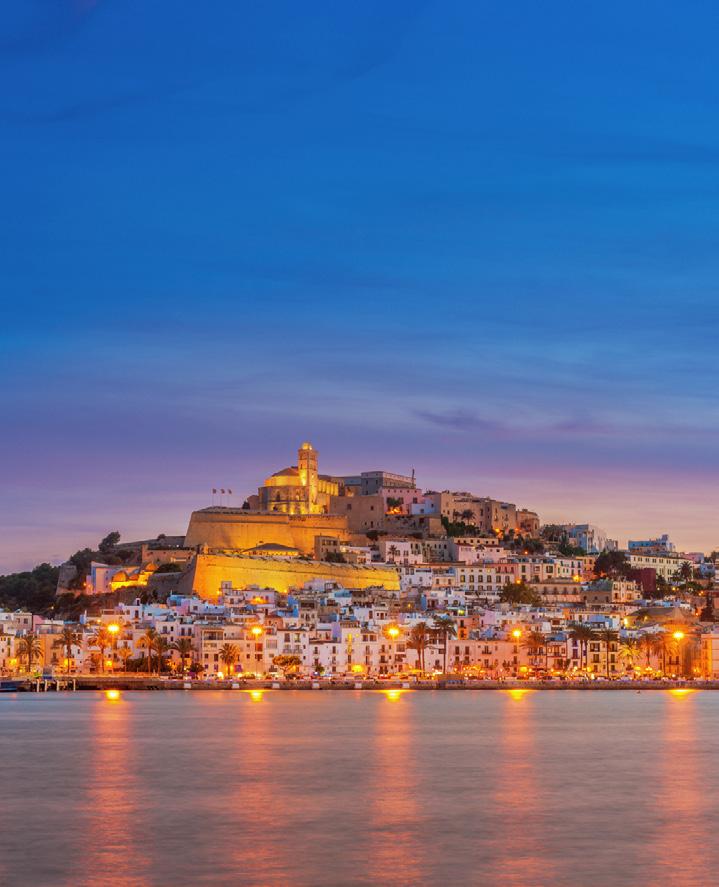
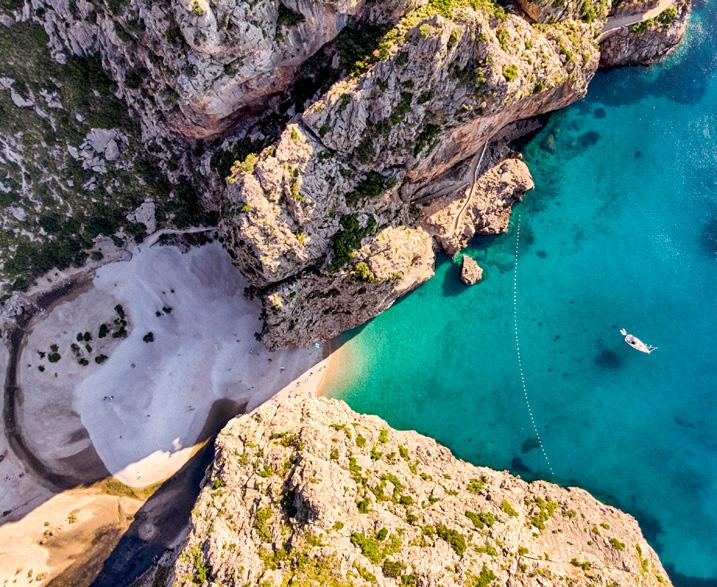
Ibizan fashion (Ibicencas fashion) is an adlib approach to style and was born in the seventies. It is a mixture of the typical dress of the island’s peasants and regional costumes and is influenced by hippie style. Ibiza Fashion Week was established in 1971 and has gained international recognition. Pure white straw hats, esparto grass shoes, shawls, silk and linen fabrics—these island staples have become inspirations for world

class designers. Ibiza also offers popular artisan products including flaon, orelletes, and herbal liqueur. The variety of Ibizan wines available is also a delectable delight. If you’re looking for these local products as well as local crafts and fashion, be sure to visit the vibrant Es Caná and Las Dalias markets.
Today Ibiza is an island that offers a variety of options to all visitors and boasts world-class hotels and Airbnb options as well as upscale restaurants. There are so many places to visit in Ibiza including four UNESCO World Heritage sites: Dalt Vila, Posidonia oceánica, Sa Caleta archaeological site, and Puig des Molins Necropolis.
DALT VILA: HISTORIC CENTER OF IBIZA
Walking the streets of Ibiza is like a unique time-traveling experience where contemporary life meets the beauty of the past. The historical area of the city, also known as Dalt Vila, is a fortification that dates from the sixteenth century and was built by Felipe II to protect the city from relentless pirate and Ottoman attacks. In 1999 it was named a World Heritage Site for being one of the best-preserved fortified bastions in the world. Here you will also find the Cathedral of the Virgen de las Nieves and stunning viewpoints where you can see the coast and the surrounding landscapes. Take a stroll through endless alleys with traditional white houses, shops, terraces, and restaurants.
POSIDONIA OCEANICA: DIVING AND KAYAKING
Explore the largest and longest living organism in the world! Posidonia oceanica is a marine plant endemic to the Mediterranean and is not found in any other sea in the world. The seabed of the islands of Ibiza and Formentera are home to the largest living organism in the world— extensive meadows of Posidonia oceanica eight kilometers long and over 100,000 years old. This underwater forest, which stretches from Es Freus (Formentera) to Ses Salines beach (Ibiza), is the habitat of numerous species. It is also responsible for the clarity and turquoise color of the waters of Ibiza and Formentera, making them one of the best places in the Mediterranean to dive.
SA CALETA: ARCHEOLOGICAL SITE
Sa Caleta was an old Phoenician town, located near the beach of es Bol Nou, and today it is surrounded by a containment fence and a museum project in progress with no end date. Access is not possible, though photos can be taken from outside.

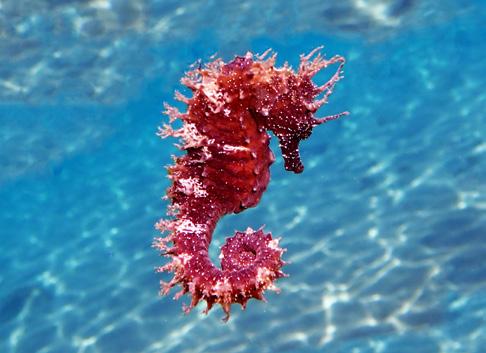
PUIG DES MOLINS: NECROPOLIS
What an incredible place! There were numerous large necropolises in the Mediterranean, but many have been lost over the years due to urbanization. The Puig des Molin necropolis is the best preserved and offers an historical glimpse into life on the island. (If you’re looking for other necropolises to visit, check out Ses Païsses de Cala d’Hort! It is between Cala D´hort and Cala Vedella, and it was a Punic-Roman settlement with two buildings and two necropolises.)
Beaches (Calas) If you’re looking for the magic of secret beaches, be sure to visit Es Pujolets and its two small beaches. They are visible from Cala Tarida beach, one of the most popular beaches in Ibiza.
For a bit of a jaunt, check out Es Portitxol in the north—it’s one of the best-kept virgin coves on the island! You must park your car near the Isla Blanca urban core and then walk for thirty minutes until you reach the area where the asphalt ends. The path runs through beautiful pine forests and offers wonderful coastline views. When you reach the stone beach, you’ll see traditional fishermen’s huts on the shore. The water actually looks like a small circular lake with turquoise blue water and it is perfect for diving or snorkeling. (On the return journey, stop in Sant Miquel and visit its famous church—it’s one of the most beautiful in Ibiza!) Cala Tarida, Cala Xarraca can be a base camp to explore the small coves in the surroundings areas such as the wonderful S’Illot des Renclí, about four kilometers from Xarraca. Part sand and part stone, you can also reach the beautiful Es Canaret bay from this beach, which is an ideal spot for diving and boat-anchoring. In the southwest of the island, Cala Llentrisca is another jewel. Encased and hidden between two hills with abundant vegetation, it’s nestled behind fishermen’s huts. Put on your diving goggles and simply enjoy a paradise landscape!
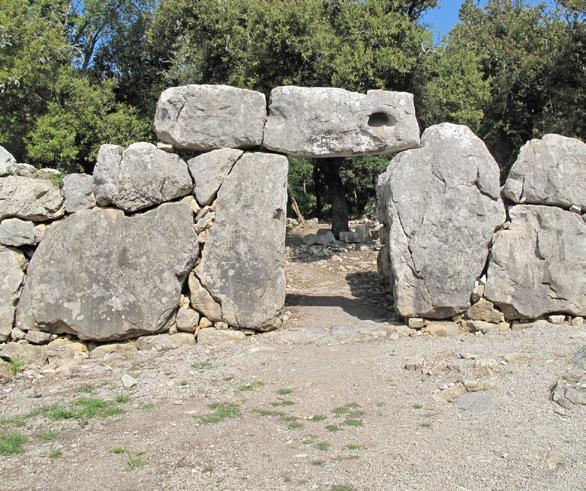
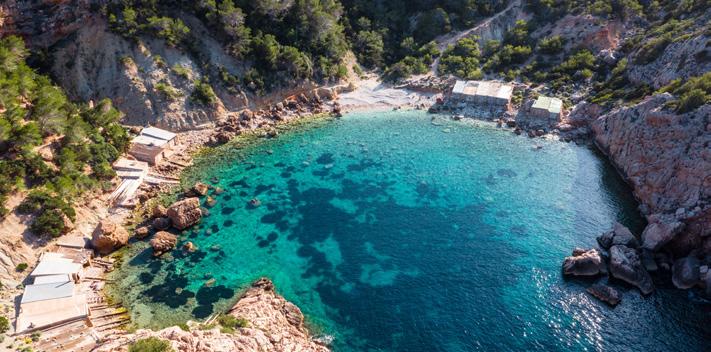
Not far away, Atlantis “La Pedrera de Cala D’Hort” may be a difficult beach to access, but it is one of the most breathtaking. After a steep descent you’ll find large slabs of polished rock on the shoreline that have formed small natural pools of totally crystalline waters. Atlantis is an ancient quarry that time, hippies, and intriguing local legends have turned into a mythical place. There are small altars, carved figures, and Buddhas or gods of the Hindu cosmogony painted on the walls.
Cala Saladeta is a small stone and sand beach that is a little sister to the popular Cala Salada. It is located in the west near Santa Agnés de Corona, and you can swim from Cala

Salada and along a path between the rocks. If you’re looking for the best views on the island, look no further than La Cala de S’Aigua Blanca! It is traditionally a nudist beach, but dressed visitors are also welcome. (This beach is also famous for clay baths that many people apply as a natural toner.)
The Cueva de la Luz is more than just a secret beach, it’s actually a crater at the bottom of a rocky path surrounded by cliffs and crystalclear waters. Only suitable for brave adventurers, you can jump right down to the crater (there are ropes to help descend as well). You can also walk or boat in from the sea, and then dive under the aquatic gallery to emerge in the center of the cavity; quite an experience!
CAVES
The island has many cavities and holes of different sizes throughout its landscape, especially on the coastline, that are perfect for use as a parapet in the sun. Some have also been used as houses by hippies and pirates. However, if you are interested in learning more about the underground world of Ibiza, here are the most notable caves to visit:
Cova de Es Culleram is located 150 meters above the sea in Sant Vicent de sa Cala and houses the largest sanctuary on the island. Thousands of
people visit to worship the goddess Tanit; a tradition from ancient times that is still being upheld. This is the largest discovered sanctuary in the Mediterranean dedicated to this goddess, and it has three areas: an exterior section where sacrifices were carried out, a central portion where the goddess was located, and a final deep area where the ashes of the consecrations were deposited.
On some northern cliffs near San Miguel is Can Marçà. It is open all year and dates back more than 100,000 years. Originated by telluric faults, its entrance is located next to a vista with beautiful views of the sea, and it also has a pleasant bar with a terrace. Visitors can take a

forty-minute tour through waterfalls, streams, small lakes, and stalactite and stalagmite formations to end the visit with a small sound and light show. During the summer months, there are guided tours every half hour in various languages that will allow you to get to know this ancient smuggler’s refuge in more depth. Given its particular location, it is also highly recommended that you take a walk on the nearby cliffs.
Sa cova de sa punta des forn is an inclined cave located in Sant Vicent, near the Cova Des Culleram. It is known as the cave of women because female rituals have been performed there for decades, especially on full moon nights. The views are spectacular and the sunrise from this point of the island is a gift! With a little luck you may also see some dolphins or the spirals in the sea that paint the currents. Both are often visible at this point and are steeped in legend.
Cova de sa figuera borda is a cave located near Cala Comte in the Consell de Sant Antoni. With its beauty and uniqueness, it’s no wonder it was the location for pirate hideouts and eternal raves. The sound multiplies, the breeze plays between the hollows of the mountain, whistling and caressing the skin, and the reddish tones of light are reflected in the water and on the rock walls.


The mythical Covas des Vedrà are usually visited by people who seek to find a spiritual and different experience. It is likely you will find an empty cave waiting to be inhabited. Even if it is only for one night, you will not regret doing so. It is said that whomever sleeps one night in the caves in front of Es Vedrà experiences an extraordinary vitality, an emotional rebirth, renewed clarity, and an increase in sense and strength.
No matter where you’re visiting, watching a majestic Ibizan sunset is like witnessing something out of a fairy dream. It’s an experience that can take you on a romantic journey beyond the horizon. The five best locations for sunset viewing are Cala d’Hort, Es Vedrà Viewpoints, Es Savinar Tower, Cova des Mirador, and Cala Llentrisca.
LOCAL CUISINE
Like the vast majority of Mediterranean gastronomy, Ibizan food is characterized by its multiple flavors, fragrances, textures, and colors, and it delivers fantasies to the senses.
Ibiza has a wonderful selection of local products including organic honey, olive oil, wines, and almonds. When visiting a local restaurant, partake in some island fare to truly experience Ibizan culture. Typical of the island are Sofrit pagès (lamb, chicken, or both), Arròs de matances, Sobrasada eivissenca and Butifarró, Borrida de ratjada (sea ray), Tonyina al´eivissenca (tuna), and Bullit de Peix. In addition, there are El Cuinat, Coca de Pebrera (pepper coca), El Flaò (cheesecake), Les Orelletes, Els Bunyols, and La Greixonera. To drink, try Las Hierbas Ibicencas and any local wine. The local wine called Vi pagés in Catalan is not bottled and is the most traditional drink on the island. In the central town of San Mateo, the annual wine harvest is given to neighbors and strangers, and a popular festive treat is Nadal sauce which is made from local almonds.
THE FOLLOWING ARE SOME RECOMMENDATIONS FOR HEALTHY AND DELICIOUS RESTAURANTS ON THE ISLAND:
Number 74 l’atelier offers organic and Ibizan products for healthy Mediterranean, Middle Eastern, and Eastern recipes. Wild Beets Ibiza is a beautiful restaurant whose dishes are not only delicious, but they’re also true works of visual art. Aiyanna Ibiza serves healthy breakfast and lunch offerings in a beautiful and modern restaurant facing the sea. Eat is Life Ibiza has a different menu every day so that you know the benefits of healthy and diverse food, and they also offer delivery. Musset Saint Gertrude is a must for lovers of healthy cuisine. They offer vegetarian and vegan dishes, as well as an extensive salad menu. Babylon Beach Ibiza has its own garden from which they extract raw ingredients to prepare organic dishes. Finally, Little Ibiza Figueretas is a charming restaurant with sea views that highlights recipes with an Asian influence.
WINE TOURISM
The adventure begins in the area of Sant Mateu d´Aubarca where the most wine is produced. Begin your tour with the wineries of Sa Cova and Can Maymó. Sa Cova is a gastronomic adventure reserved for lovers of good wine. It has individual or group tastings and is one of the most recognized vineyards on the island. Can Maymó showcases the traditional flavors of the grapes from the Ibizan countryside. This vineyard has commercialized the wine grown from the red and stony earth of Sant Mateu, and it has been crowned as one of the best wines to blend native and foreign grapes. Following San Antoni de Portmany are two additional highly recommended wineries: Can Rich de Buscastell and Totem Wines. Can Rich de Buscastell offers sumptuous wines, authentic virgin olive oil, and various Ibizan herbs (local liquor). Promoters of organic farming, they have obtained a fantastic result with their conscious farming practices. Totem Wines is famous for its Ibizkus, and produces red, rosé, and white wines of exquisite flavor with locally grown grapes. Eleven years old, this vineyard has positioned itself on numerous occasions to be a leader in sales.

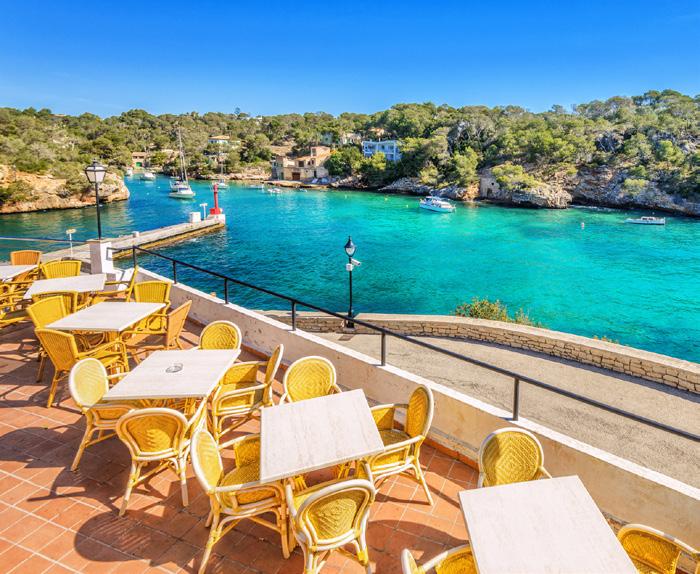
Finally, Balearic Islands wine is climbing the ranks as one of the best in Spain thanks to the efforts of Ibizan winegrowers, so stop by for a visit and tasting if you’re nearby!
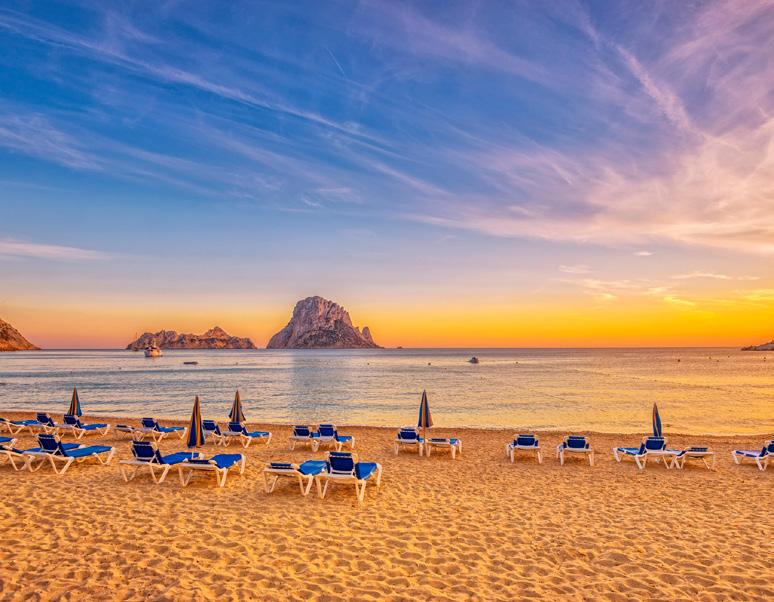

MYSTERIES OF IBIZA
The island of Ibiza has always been wrapped in a certain halo of mysticism and spirituality. Thanks to the mixture of cultures that have populated its lands, a miscellany of traditions and knowledge has been curated, and many representations, myths, and legends still exist to this day. The islet of Es Vedra is of great relevance and is a characteristic symbol of the island—no tour should be without it! The Es Vedra islet is considered to be an energetic point on the planet and is comparable to the magnitude of large and well-known structures such as the Egyptian pyramids, the Stonehenge megaliths, and the Teotihuacan pyramid in Mexico. Father Francesco Palau is known for his long spiritual retreats on the islet, and it is said that he had contact with beings of high vibration. Father Palau wrote: “The sea was at peace, the air very soft, the sky somewhat covered by a few clouds, the moon in the crescent room...And I saw a shadow coming in front of me...The figure was white as the moonlight...The instant I arrived the heavens opened, and in the radiant light of the sun I saw who it was in front of me. The mountain was filled with the glory of God.” Some
visitors have experienced similar encounters and have seen marine beings such as sirens—lights that others attribute to the presence of extraterrestrial underwater bases. Ibiza also has mysteries that intertwine with the female figure of the Goddess Tanit; an important part of Carthaginian mythology as she was the divinity of the island. It should be noted that many cultures have representations of the goddess Tanit. For the Phoenicians, it was Astarte; the Sumerians knew her as Inanna; the Akkadians, Assyrians, and Babylonians as Ishtar; and the Israelites as Astarot. Whatever its origin, Tanit’s representation was always love, life, beauty, fertility, death, rebirth, and—until today—offerings were made in her name. The island’s mysteries are many and exciting and clearly are a great gateway for researchers of extraordinary phenomena. Ibiza is, without a doubt, one of the most beautiful, charismatic, and mysterious islands on the planet. It’s a unique destination that you cannot miss, so start planning your next adventure!
ymore info: IG: @rutaancestral







